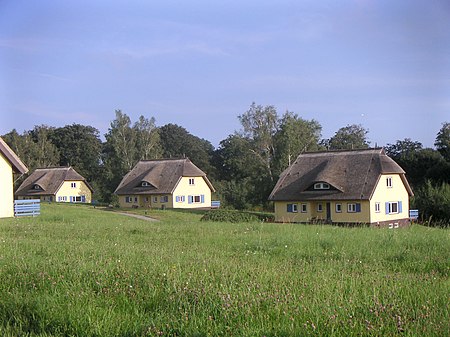Vilm

The Baltic Sea island of Vilm lies in the bay south of the much larger island of Rügen, and is one of Germany's most remote and tranquil spots. Covering less than 1 square kilometre (0.39 sq mi), Vilm is the remnant of a moraine left as the glaciers retreated about 6000 years ago. Since its formation the shape of the island has gradually changed, with sandbars and beaches forming and eroding continuously. Today the island is shaped like a 2.5-kilometre-long (1.6 mi) tadpole, consisting of two distinct parts. Great Vilm, the "head" to the north-east, rises to almost 40 metres (130 ft). The low-lying isthmus of Middle Vilm forms a long "tail" to the south-west, which culminates in Little Vilm, a rocky mound about 20 metres (66 ft) above sea level. The chalky cliffs to the southern side of Great Vilm are rapidly eroding, while sandbanks are building to add a snail-like curl to the tail.
Excerpt from the Wikipedia article Vilm (License: CC BY-SA 3.0, Authors, Images).Vilm
Rundwanderweg,
Geographical coordinates (GPS) Address Nearby Places Show on map
Geographical coordinates (GPS)
| Latitude | Longitude |
|---|---|
| N 54.316666666667 ° | E 13.533333333333 ° |
Address
Insel Vilm
Rundwanderweg
18581
Mecklenburg-Vorpommern, Germany
Open on Google Maps










